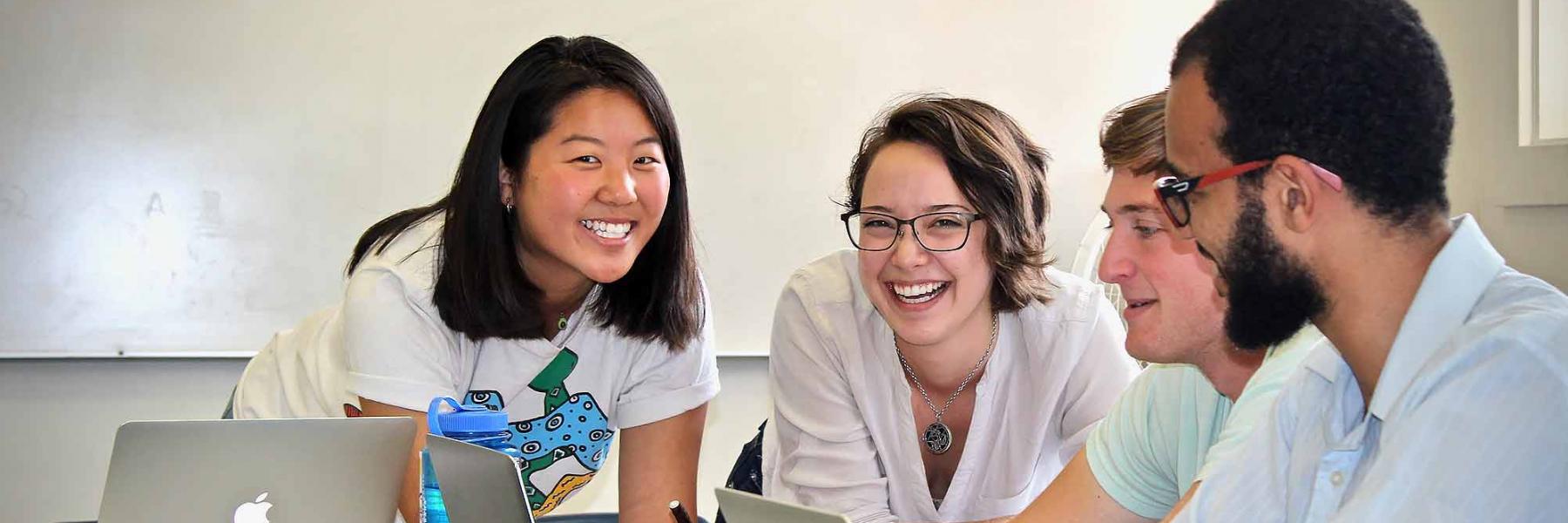CCS In Focus
- Undergraduate Students: 415
- Majors: 9
- Total Faculty: 53
- Student-to-faculty ratio: 8:1
- Alumni Who Attend Graduate School: 75%
- Nobel Prizes Awarded to Alumni: 1
About
Since 1967, the College of Creative Studies (CCS) has offered a small intellectual community of committed undergraduate students and faculty set within a major research university. CCS students and their faculty advisors work together to design a study plan that encourages students to take risks, to explore, and to develop their passion. Whether it is producing creative work or conducting original research, students are inspired and empowered to make significant contributions to their field by creating new knowledge.
Mission
The mission of CCS is to recruit the most talented and imaginative undergraduates, and provide them with the intellectual environment and advice that allows them to undergo the transition quickly from consumers of knowledge to colleagues in the act of human creativity in the arts and sciences.
Vision
A leader in innovative ways to learn and collaborate in the creation of new knowledge across disciplines and as a model for research universities to serve curious and passionate undergraduate students who become the problem solvers of tomorrow.
When they apply for admission, students choose one of nine majors offered by CCS: Art, Biology, Chemistry and Biochemistry, Computing, Marine Science, Mathematics, Music Composition, Physics, or Writing and Literature. Ambitious students sometimes add a second major. When appropriate to their educational goals, they may also choose to complete both a Creative Studies major and a major in one the other colleges at UCSB. CCS students are also eligible to pursue a minor in the College of Letters & Science.
Each of the approximately 400 Creative Studies students enjoys close individual advising from faculty committed to undergraduate teaching. Students meet quarterly with their faculty advisor to plan a program of study that is tailored to the student's individual strengths and goals. General education requirements are flexible and can be satisfied by courses taken in both CCS and/or in the other colleges.
History
Planning for the College began in 1965 when Chancellor Vernon I. Cheadle commissioned Dr. Marvin Mudrick, Professor of English, to serve as Academic Planner for the UCSB campus during the academic year 1965-1966. He was asked to propose a long-range academic plan for the growth of campus. Chancellor Cheadle informed Dr. Mudrick early in their discussions that he was interested in the possibility of a special small college that would serve a part of the student population for which the University, at that time, made no provision. Dr. Mudrick, who himself entered college at 15, formulated several proposals. Among them was the suggestion for a separate college, independently staffed and administered, with a specially selected and identifiable student body: students who, in addition to meeting UC entrance requirements, demonstrate talent for original work in art or science. The proposal was approved by the Regents in February 1967 and the College opened in Fall 1967 with an enrollment of 50 students. The College was originally housed in a cramped Marine barracks building next to the library, a relic of WWII when the seaside campus was a military base. The College moved to its present site, still a former Marine barrack, but a larger one, in the Fall of 1975.

